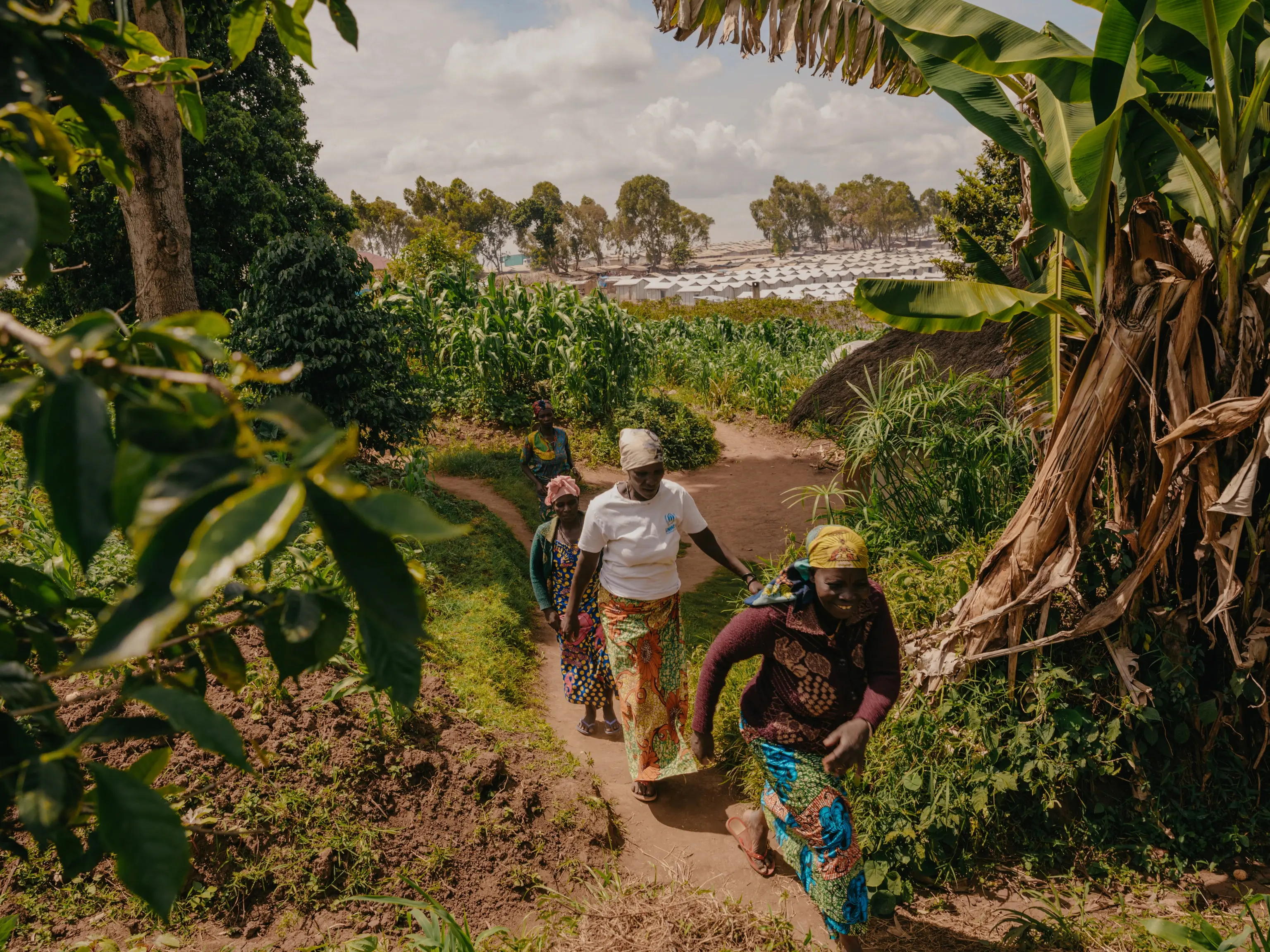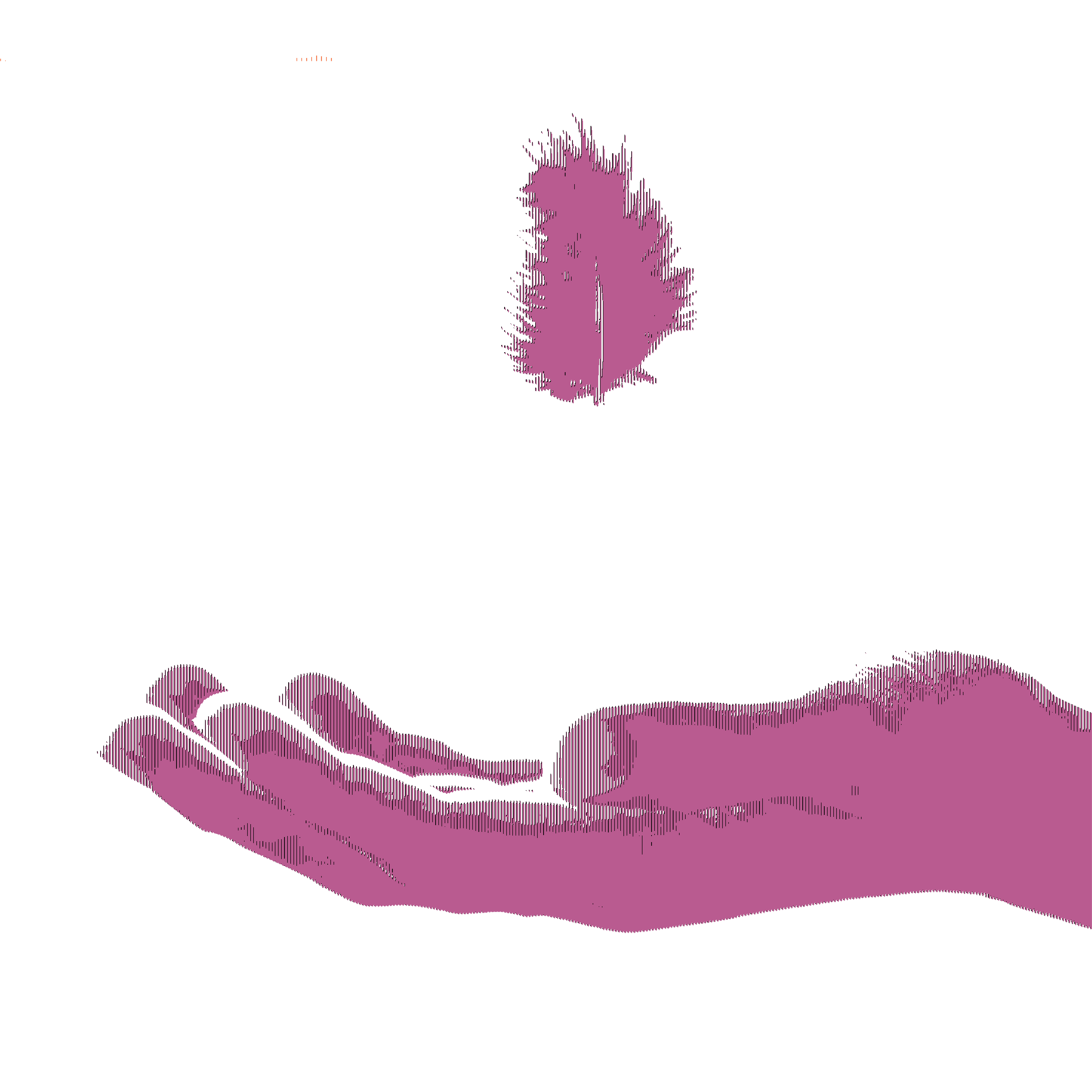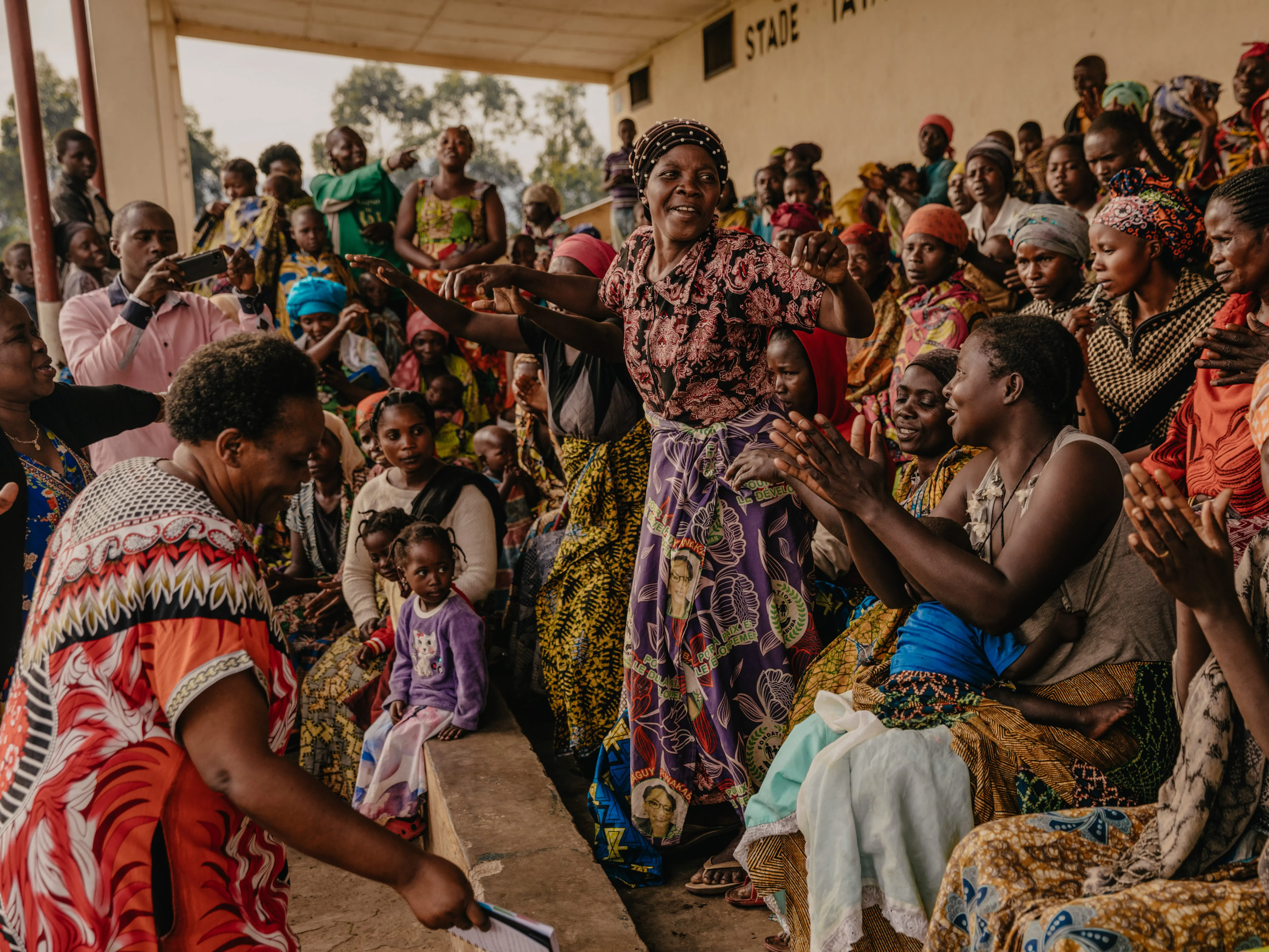
In the Democratic Republic of the Congo, activists terrorized by conflict for decades are stepping in to try to break the cycle of violence.
MASUMBUKO, DEMOCRATIC REPUBLIC OF THE CONGO—Five women in colorful clothing and headwraps walk hastily across fields of cassava near the village of Masumbuko in northeastern Democratic Republic of the Congo on their way to meet with an army commander near the displacement camp where the women live with thousands of other families.
When they arrive at the army post, a handful of soldiers in mismatched uniforms usher them past bunkers and trenches to a hut made of mud and bamboo. Inside, a young commander in slippers is slouched confidently in his chair, seemingly amused by their presence.
“We are here to ask you to join a community dialogue about tensions in the camp,” Love Kpakay says, her eyes looking down from the wooden bench where she and the other women are sitting tightly. “We need your help to bring calm. We plead for you to increase patrols and protect women when they go farm.”
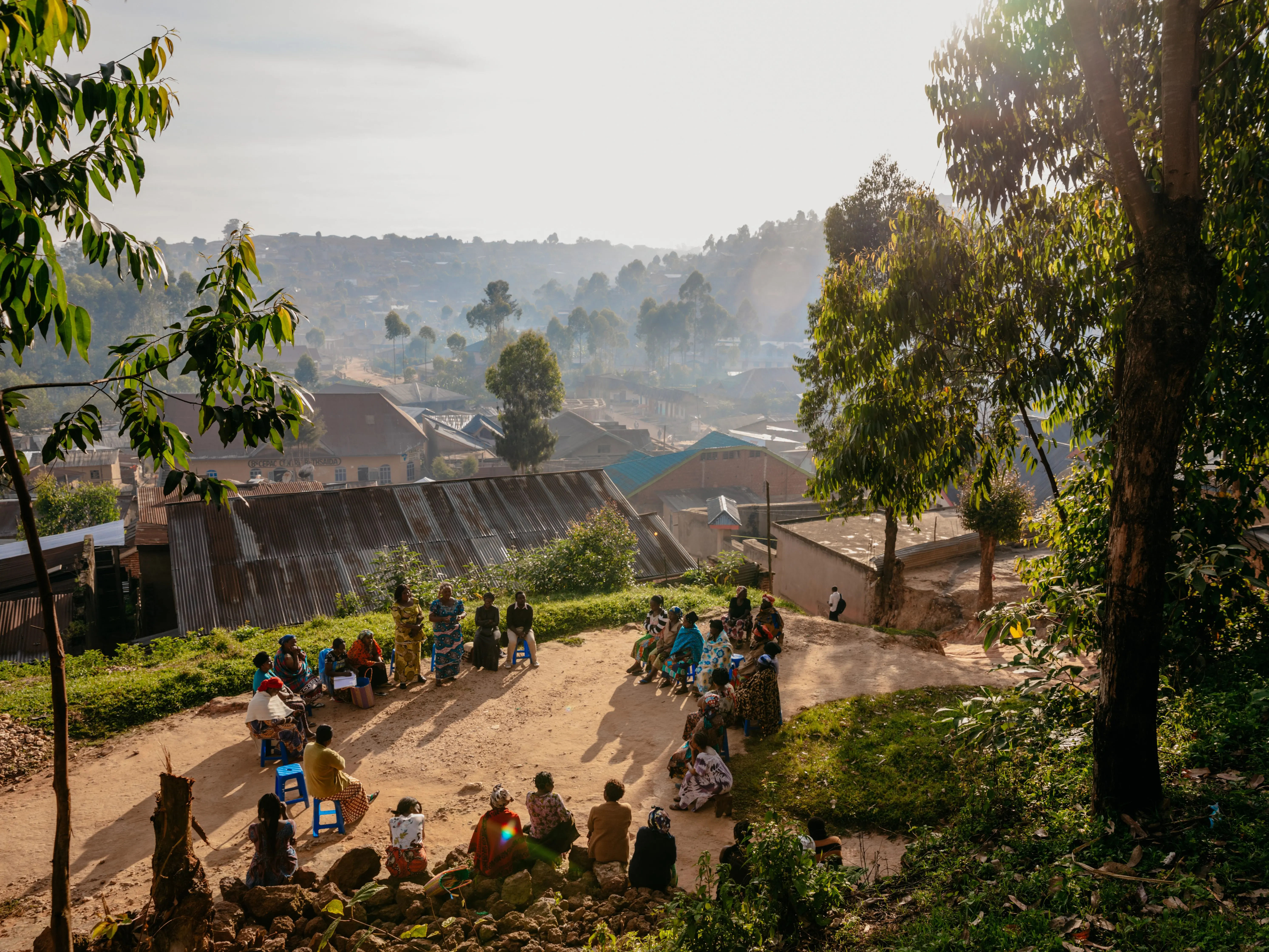
The commander fixes her with a stare: “How can you call yourselves women leaders,” he asks, “if you speak in a trembling voice?”
Kpakay, 39, and the other four women are part of a small movement of women trying to break a cycle of violence that has killed more people than any conflict since World War II. Since 1996, the provinces of Ituri, North Kivu, and South Kivu have been stirred by multiple wars triggered by an increasing number of armed groups, weak state institutions, a dysfunctional army, and ongoing battles over access to land and power. Attempts to negotiate peace deals and the presence of a United Nations peacekeeping mission have failed to stem the bloodshed and its devastating effects on civilians. Those in the displacement camps that dot the hills of Ituri have been there for weeks or months, waiting for the war to end so they could go back to their homes.
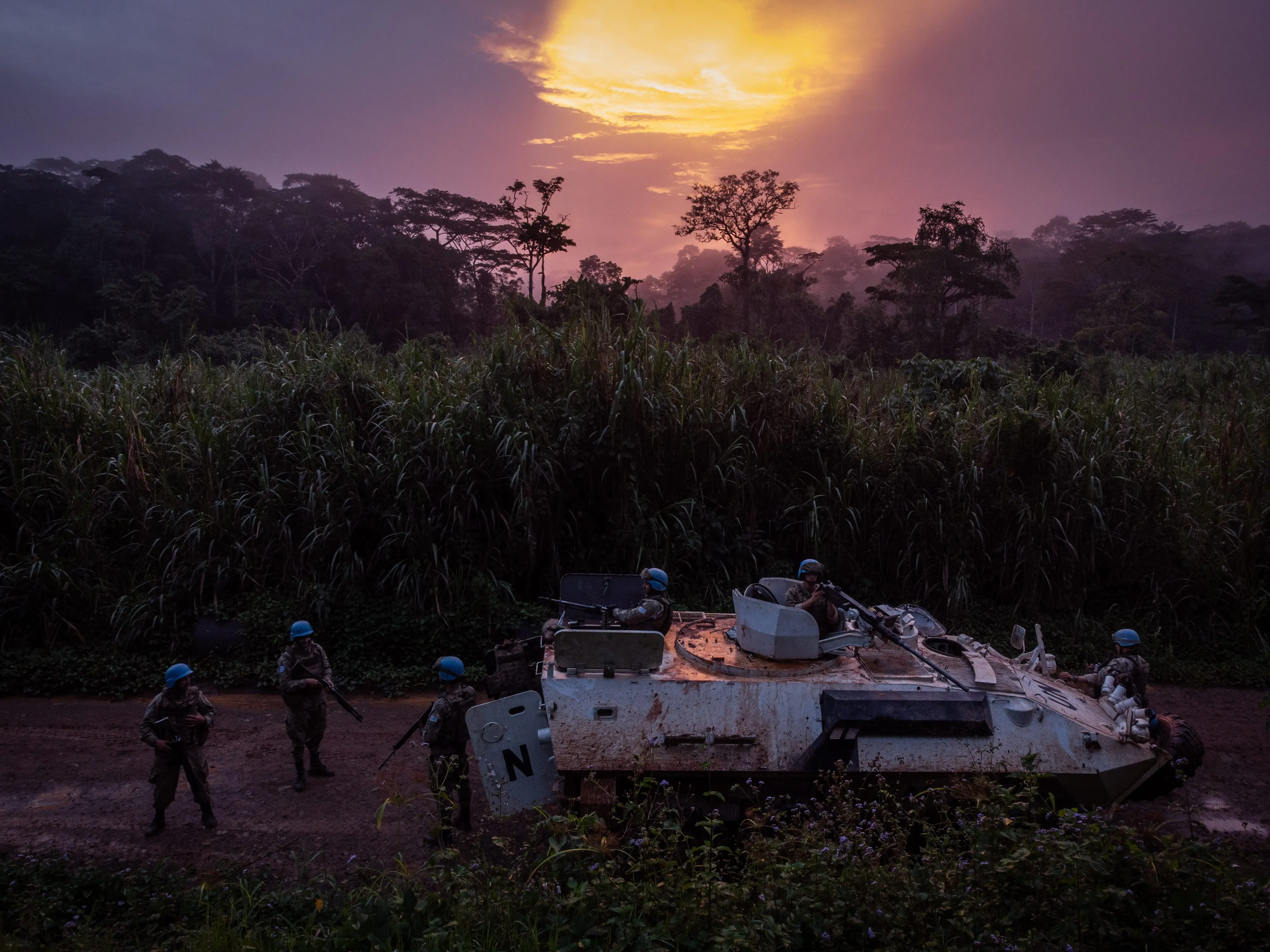
"To fix issues here, the options can be political or military, where they will fight and say 'may the best person win.' As a mother, I always support dialogue in view of the horrors of war suffered by the inhabitants of the region."
Liberata Buratwa, peace activist
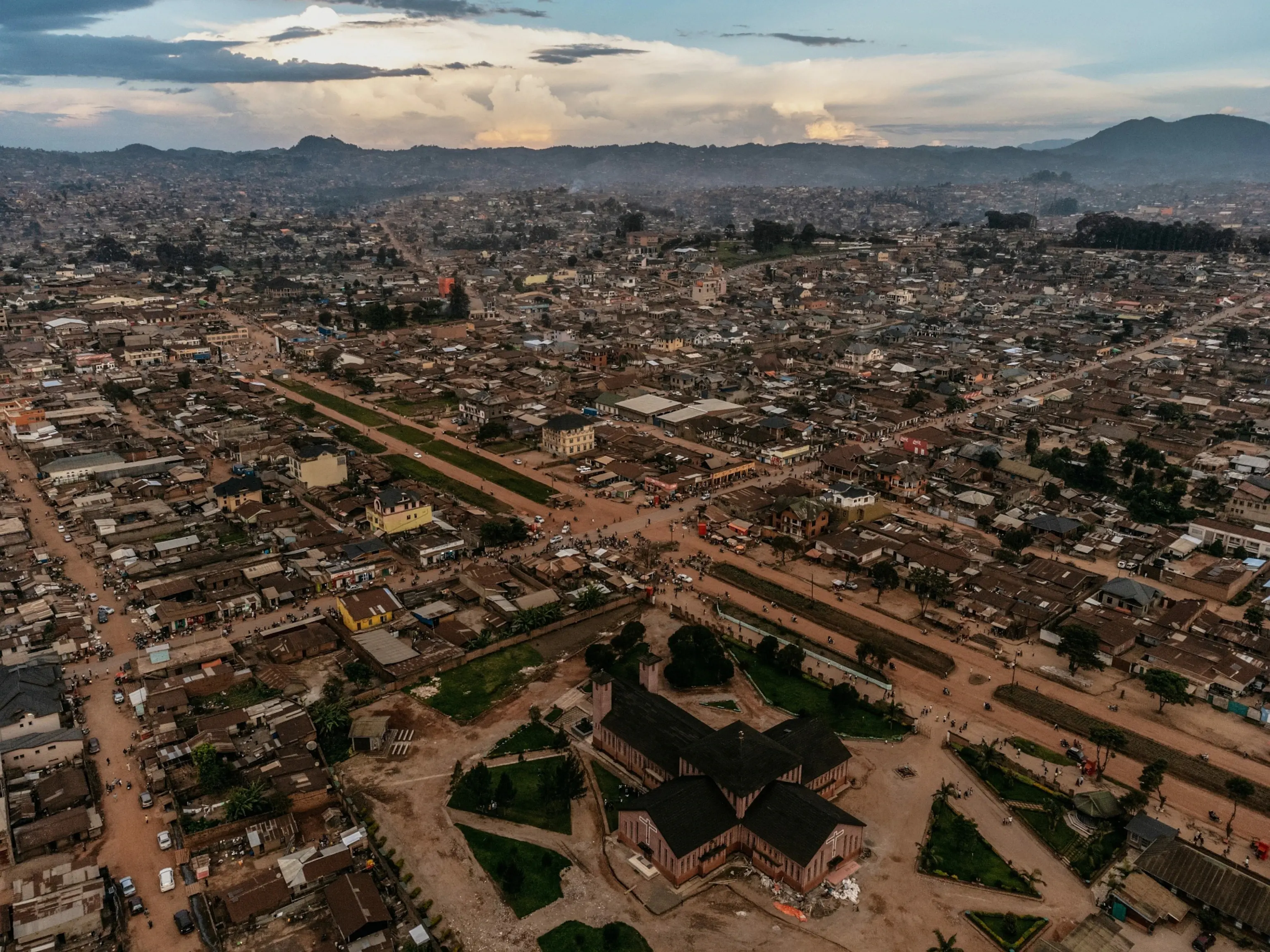
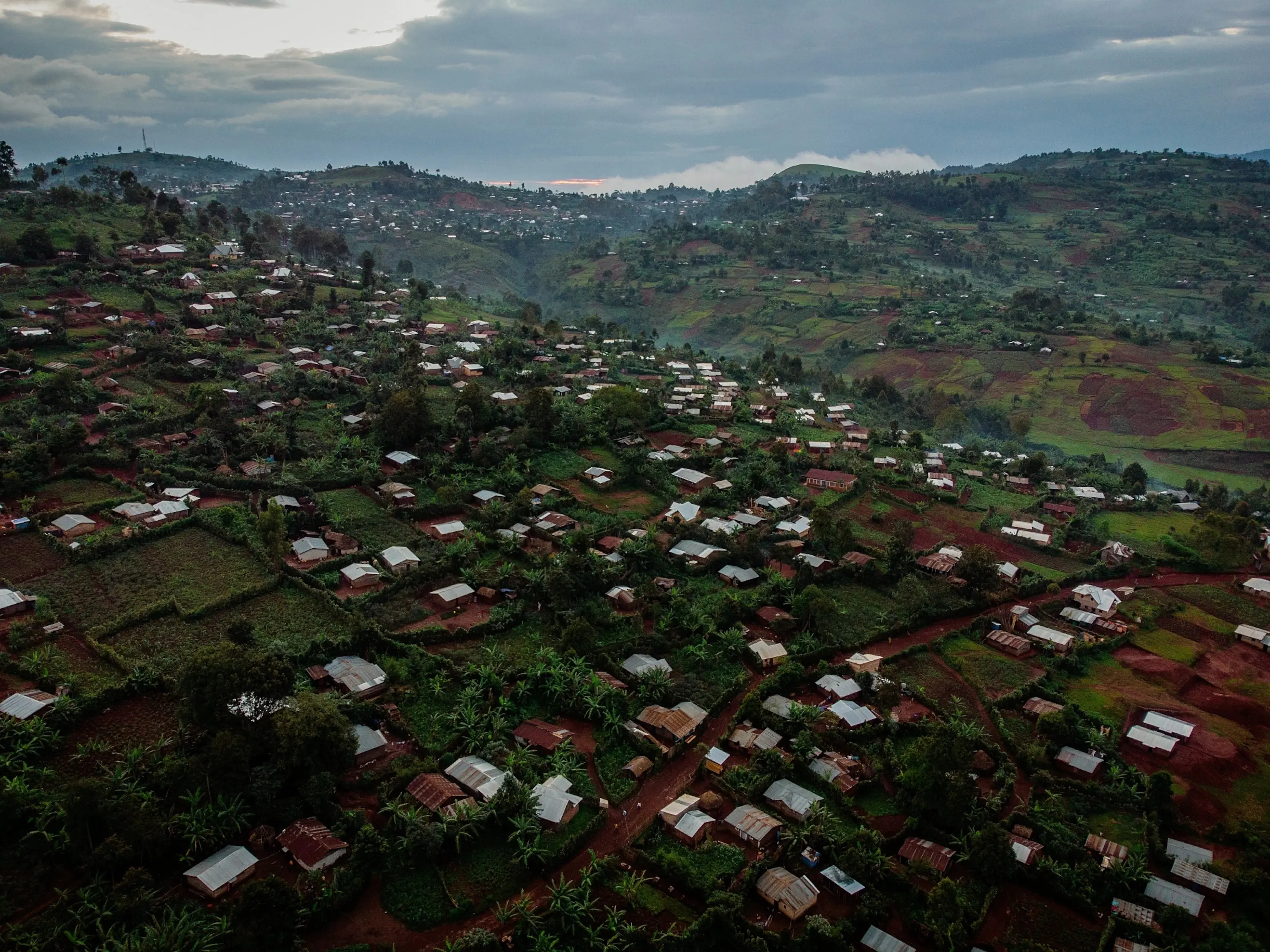
Undeterred by the response from the commander, Kpakay —who has been living in the camps since 2021 when she fled her village with her four children—continued her appeal for increased protection from rebel attacks. The visit didn’t immediately improve security around the camp, but Kpakay says it helped improve relations between soldiers and civilians and reduced the tensions and vulnerability of those displaced by the violence.
“We need to find the courage to sit around the same table,” she says on her walk back to the camp. “You will see that we will find solutions.”
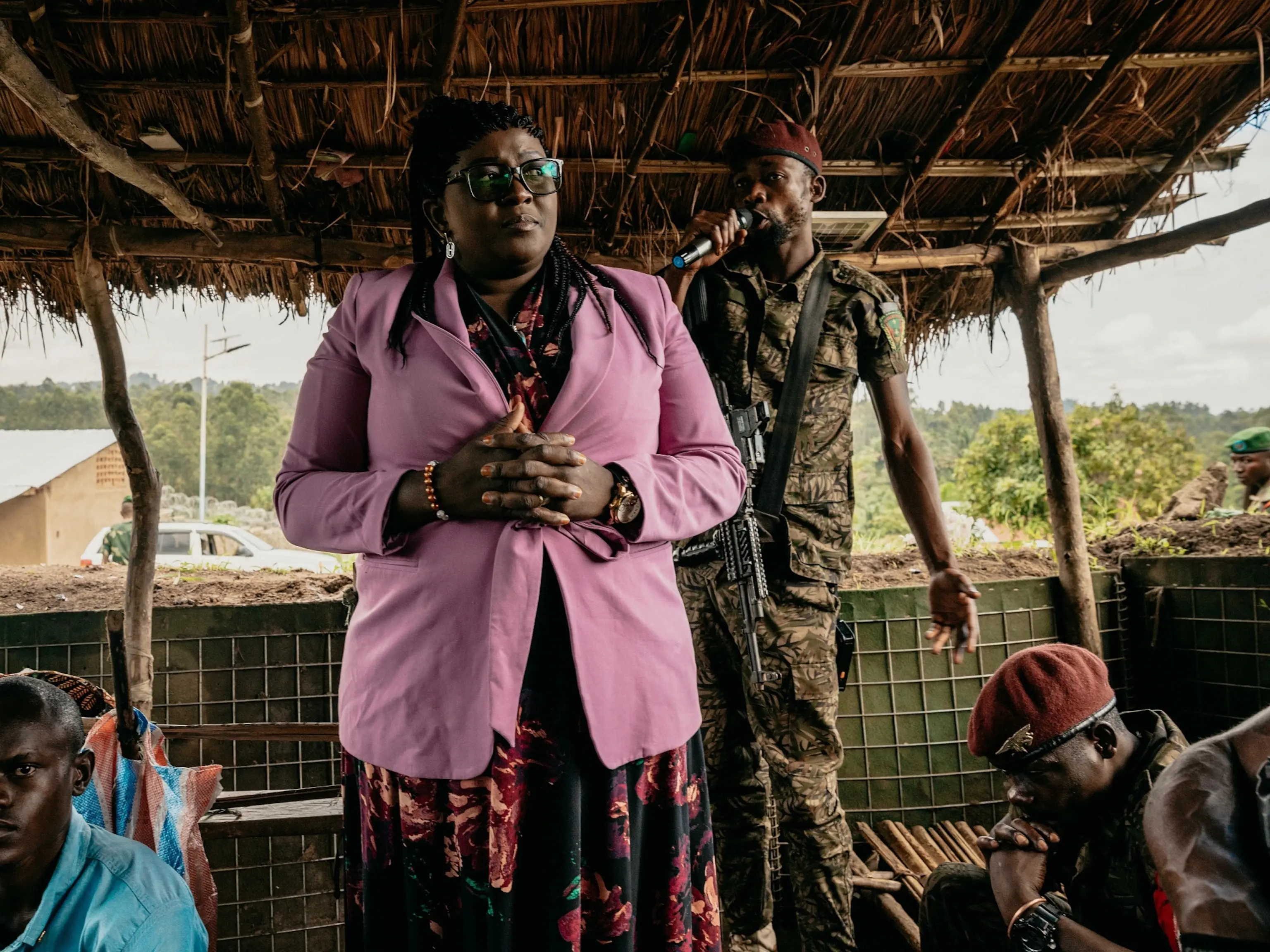
Women who venture to the army outposts to complain about insecurity take immense risks. Soldiers deployed in conflict zones act with almost complete impunity, frequently targeting women and girls with sexual violence. The UN reported that, in 2021, the military and police were responsible for about 29 percent of conflict-related sexual violence in Congo.
“They say Congo is a rape capital,” says Justine Masika, who leads an association in Goma that advocates for victims of gender-based violence. “But I say the women of Congo are strong because they don’t remain victims. They become actors of change.”
SITES OF CONFLICT AND COURAGE
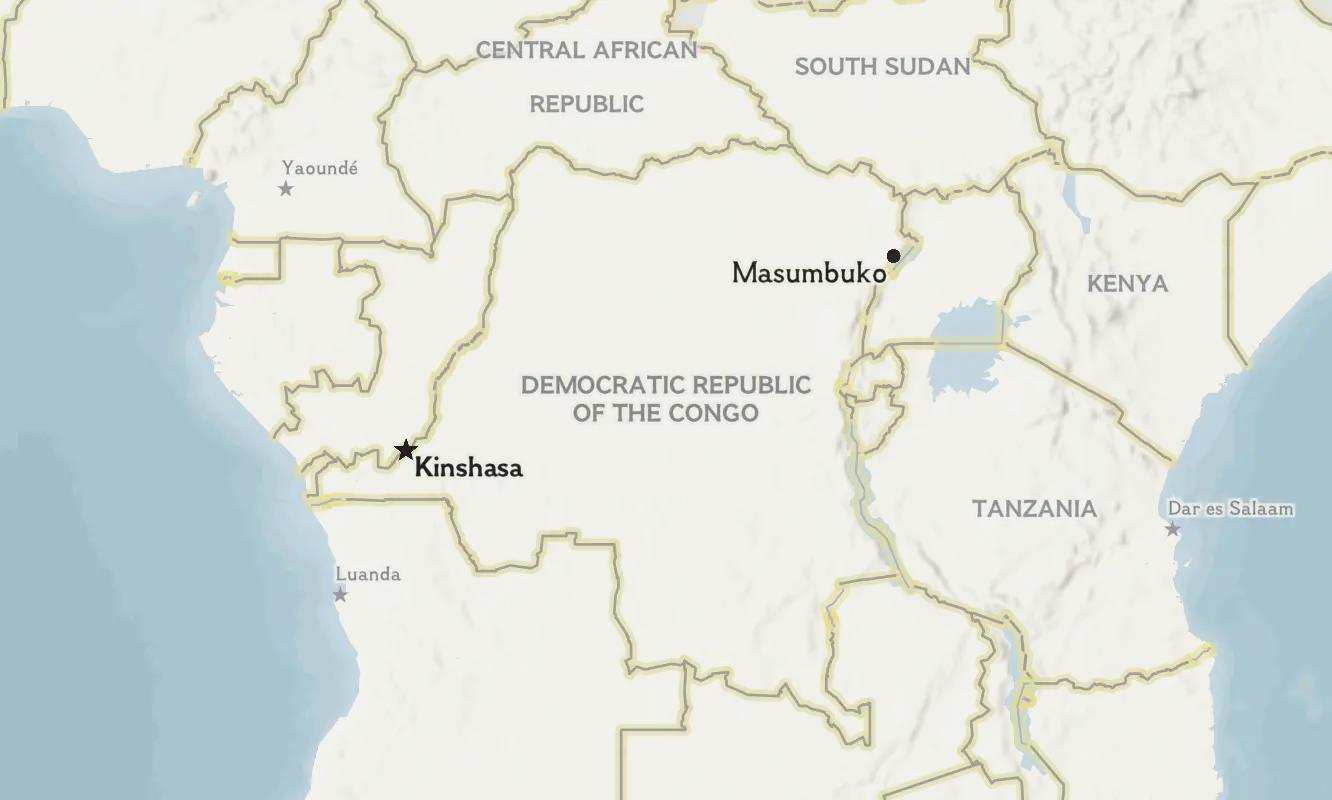
When she was growing up, “there were no massacres,” Masika says. “But people don’t respect human life anymore. They kill as they please. One day we told each other that we women can no longer keep our arms crossed.”
Negotiating with rebels
Liberata Buratwa, 56, has been running a network of women peace activists for decades in Rutshuru, a region bordering Rwanda. In 2008, at the height of a spate of massacres and failed ceasefires, she led a delegation into the forest to meet Laurent Nkunda, leader of the feared rebel group known by the acronym CNDP (National Congress for the Defence of the People.)
“We told him, ‘my son, rebellion will lead you nowhere, the bush is for the animals, not for the people,’” Buratwa says.
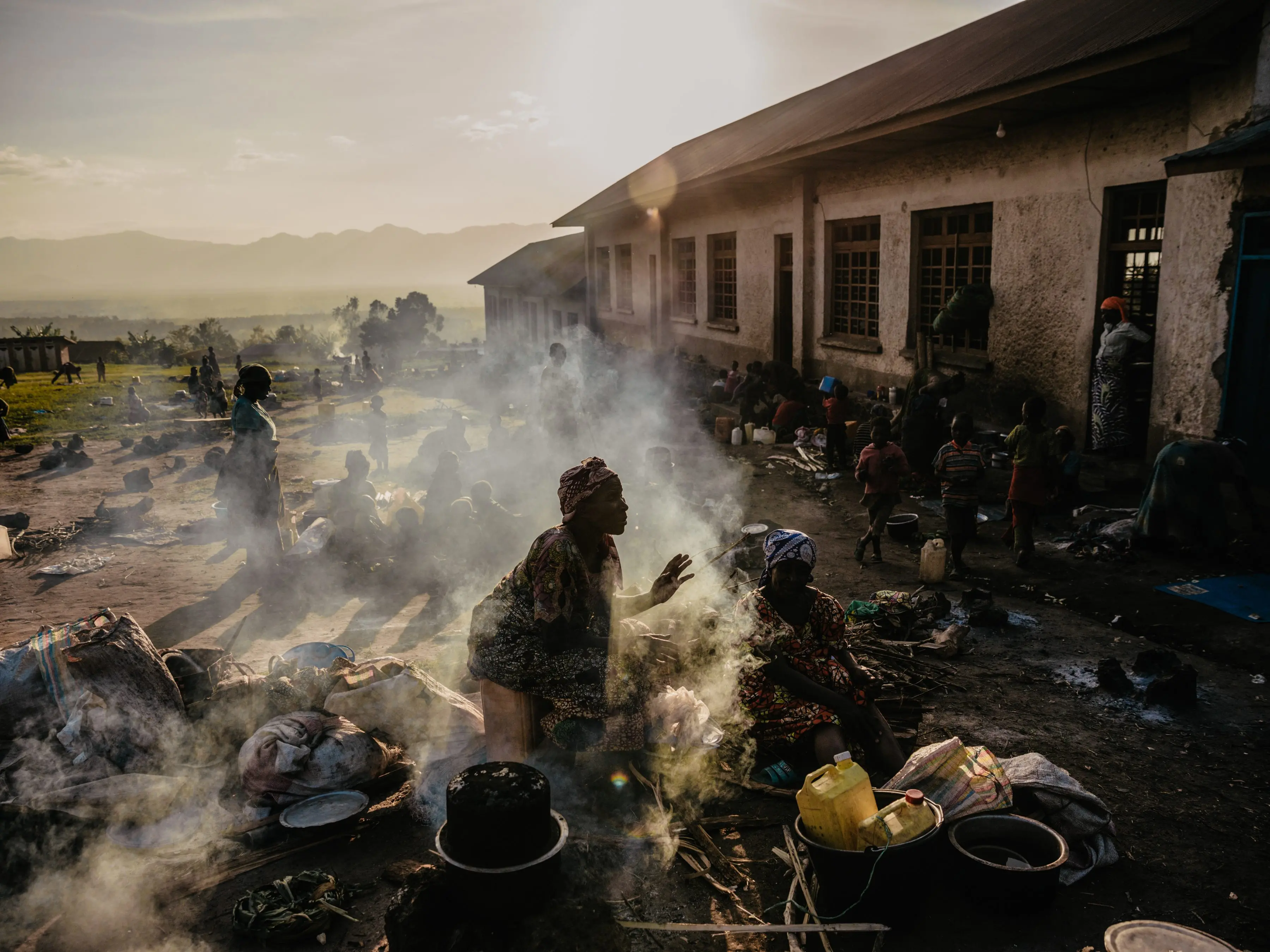
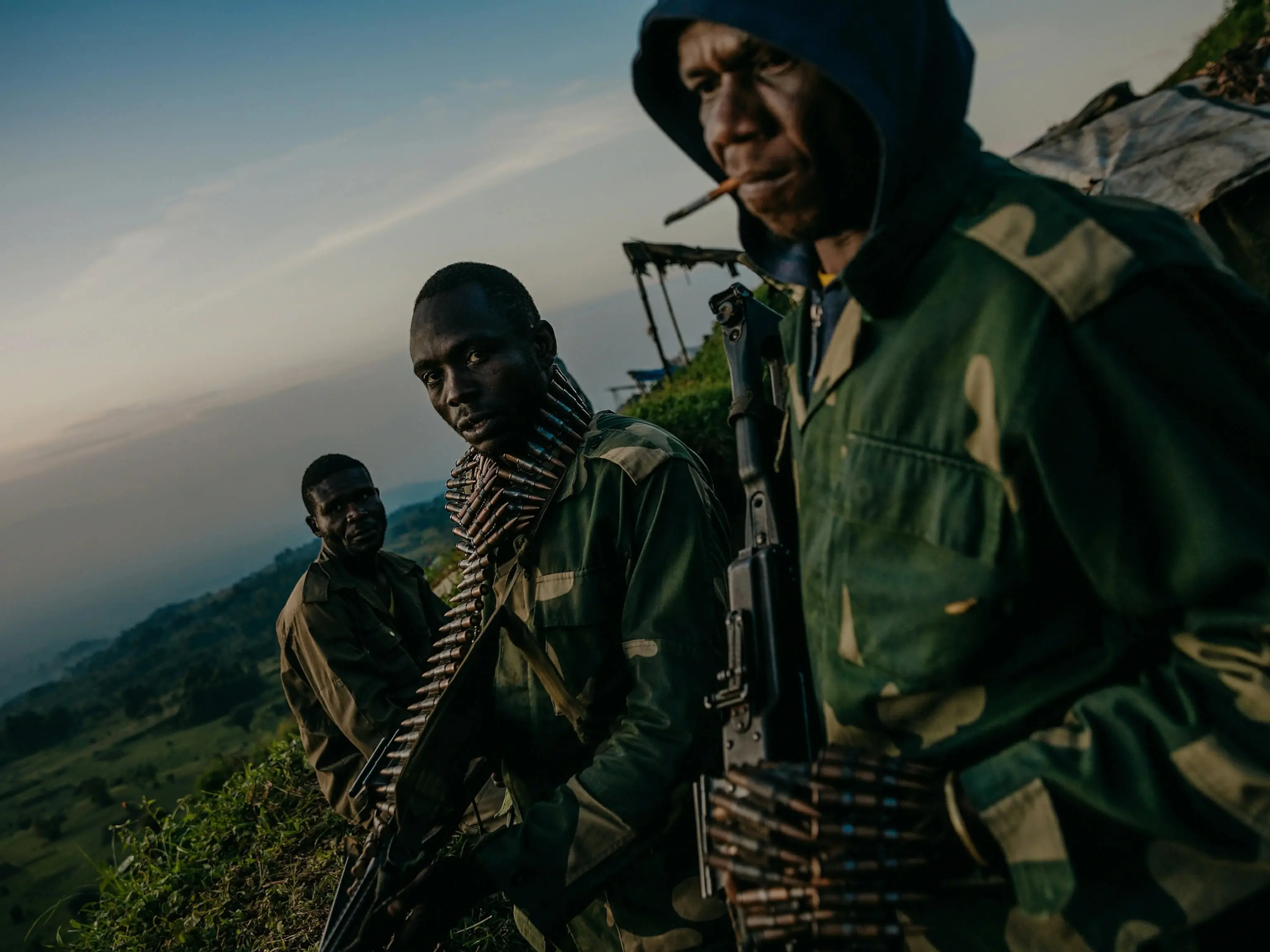
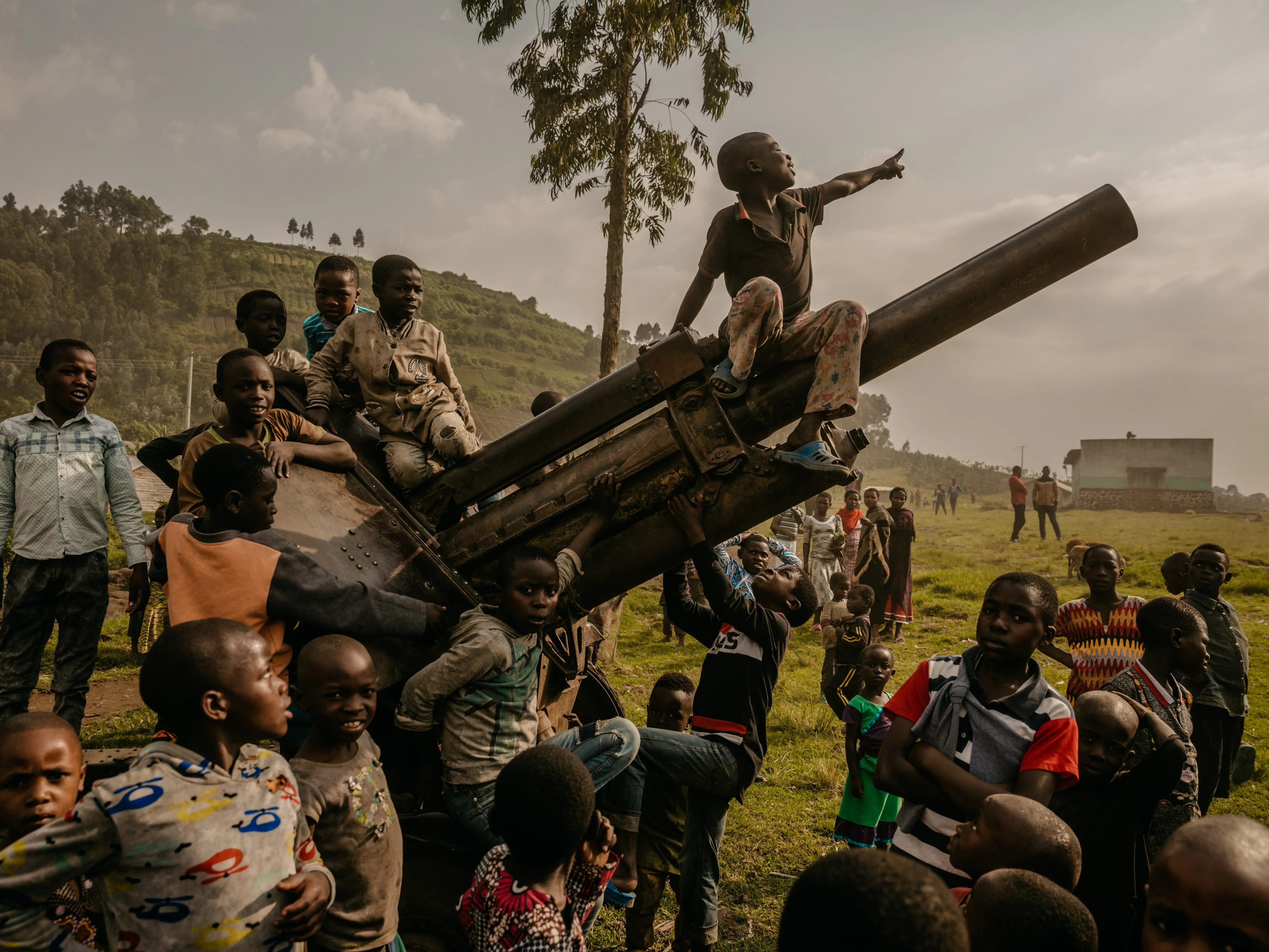
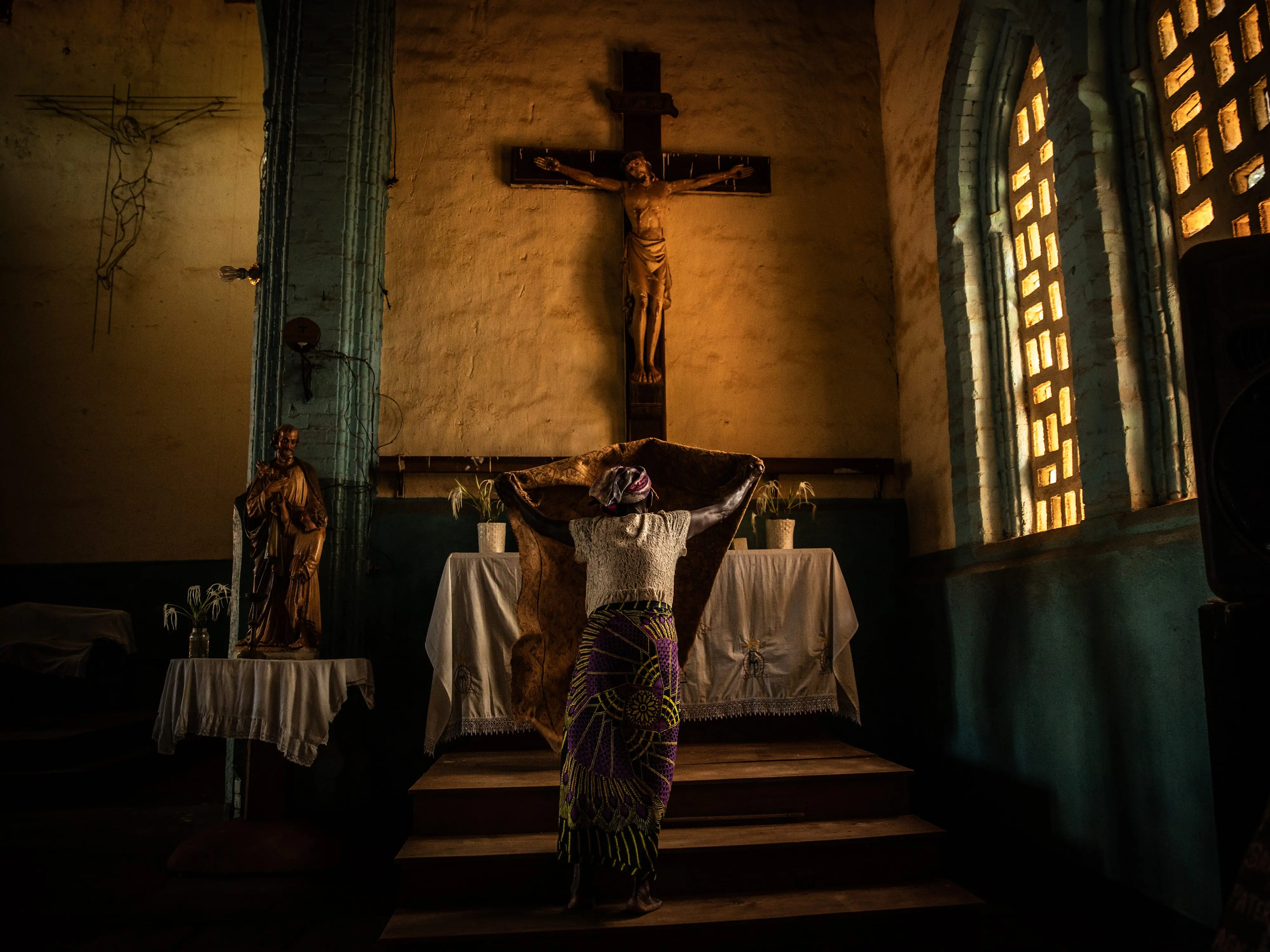
A few months later, the CNDP threatened to attack Goma on Christmas night, causing mass panic in the city. Buratwa and her colleague, Edoxie Nziavake, headed once again into the forest to plead for the population of Goma to be spared.
“It was calm that night,” recalled Nziavake. “They kept their promise.”
The women’s audacious visits opened an unprecedented channel of communication between the rebels and the government which, combined with international pressure, culminated with the 2009 Ihusi Peace Agreement. While that truce was short lived—a rebel group known as M23 contested the accord—it provided a blueprint for women’s strategies.
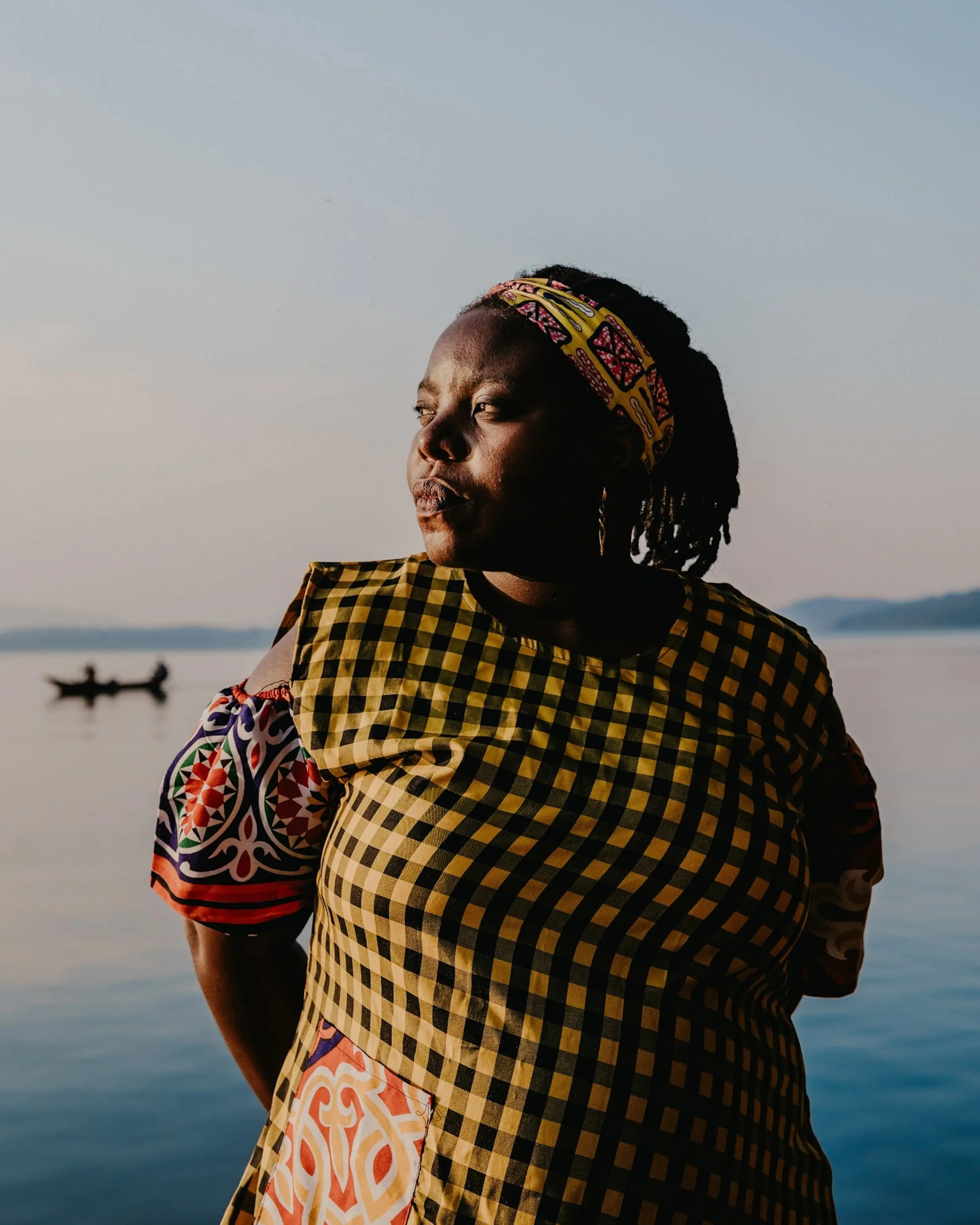
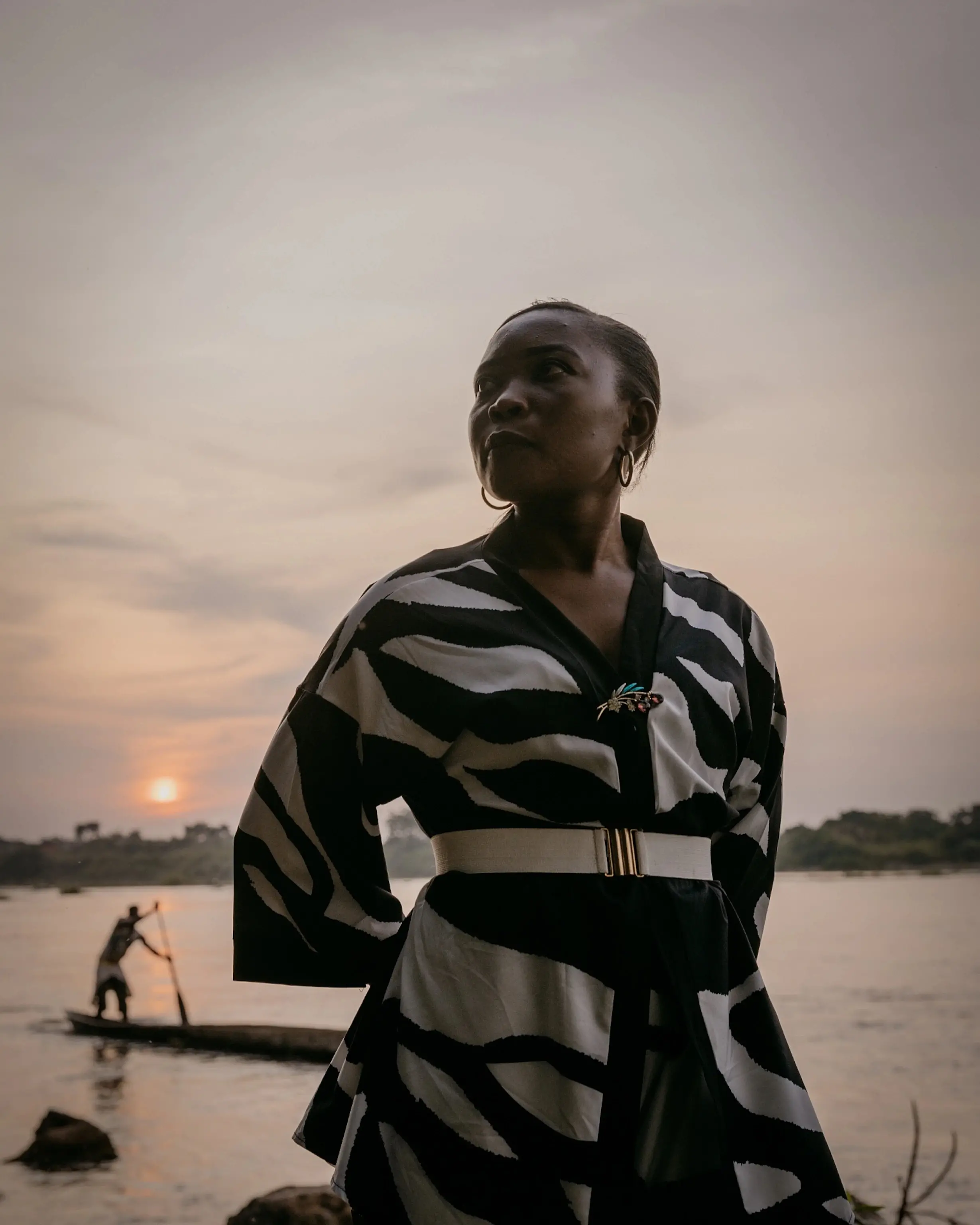
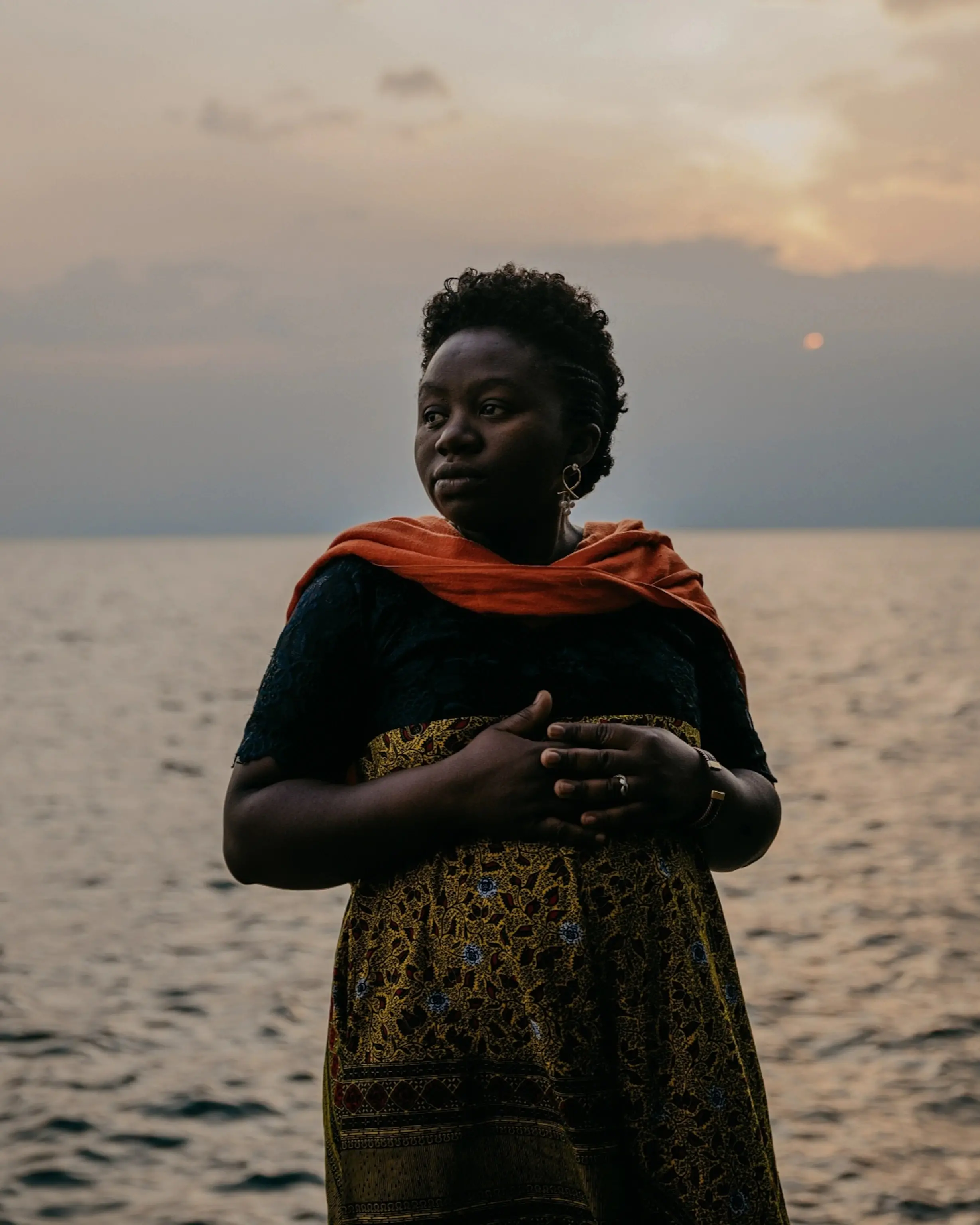
The women successfully ventured into rebel territory and were heard by the commanders, says activist Gogo Kavira, because they strategically presented themselves as mothers. Men, soldiers, and politicians are likely to be killed if they approach rebels, she explains. But “when it’s your mother who comes, or the lady from your neighborhood, or your girlfriend’s mother, men cannot refuse to listen.”
“Women speak with their heart,” Kavira says with a smile. “They are there to help, not judge.”
Assessing security
One morning in late May 2022, the people of Rutshuru once again woke to the blasts of rockets and mortars after M23 rebels attacked the area. Under seasonal rains, thousands of civilians fled to safety carrying children, cooking pans, goats, mattresses. Columns of Congolese Army tanks sent from Goma charged in the opposite direction. They were followed by flocks of motorcycle taxi drivers cheering support.
“Here insecurity is a cycle,” says Buratwa, adding that, while the rebels continue with their attacks, she is “not intimidated” by the growing violence. “I have been working for peace since I was very young.”
During the turmoil, Buratwa rushed to where hundreds of families scrambled to seek shelter at churches, schools, even a football stadium. Gathering a crowd to her, she asked the newly arrived families which roads they had used to flee, where the most intense fighting was taking place, and which communities were missing family members. Information sharing is a central part of activists’ work. Testimony from the ground is the only tool they have to assess the security situation and help families make decisions about whether to return home.
“Every time we start harvesting the war starts again!” a disgruntled woman complained to Buratwa. “The rebels will be pillaging our fields right now.”
Days later, Buratwa and four displaced women obtained a meeting with General Peter Cirimwami, who commanded the fight against the M23 in Rutshuru to advocate for soldiers to protect civilians and to be held accountable for their actions during operations.
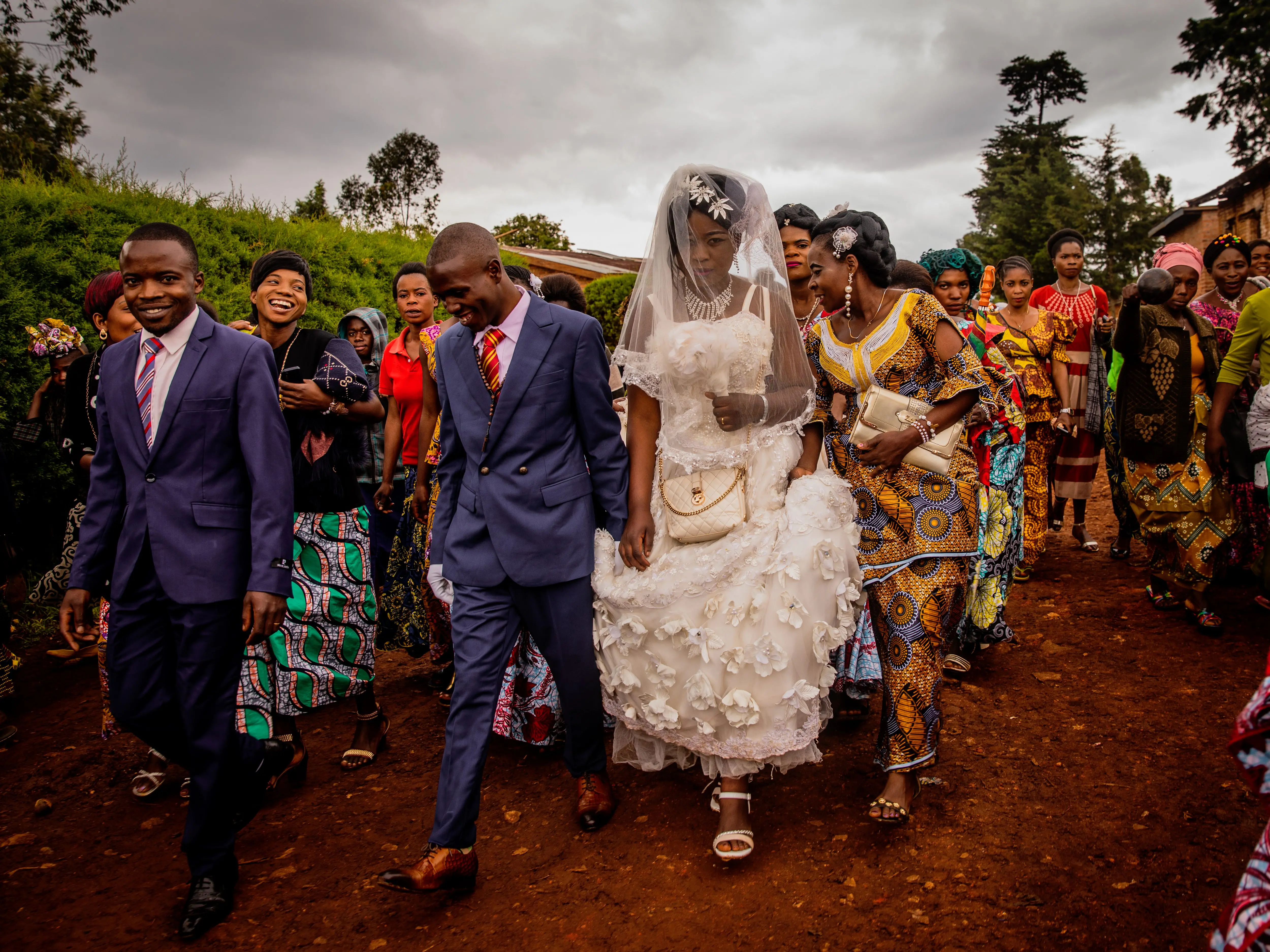
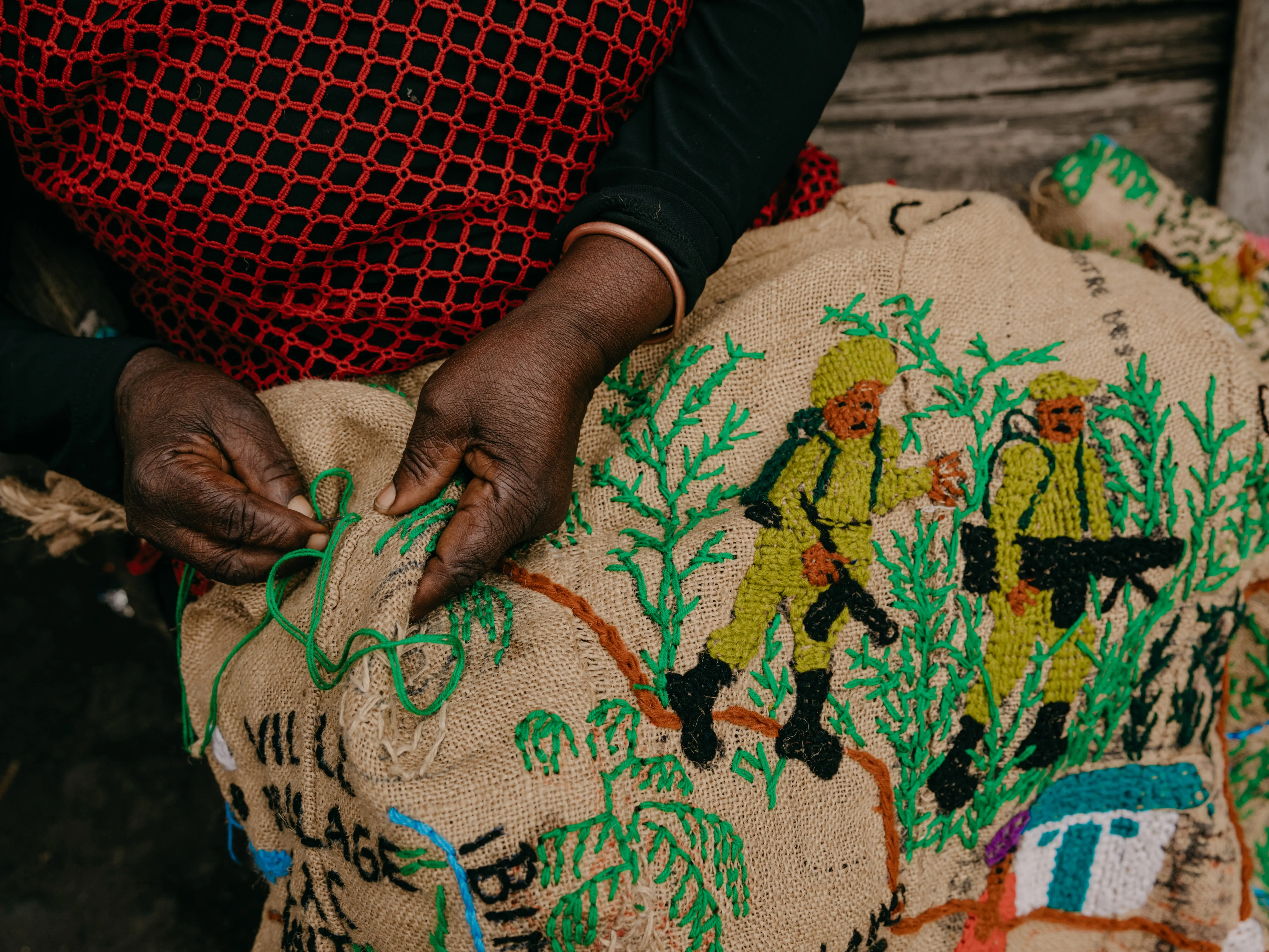
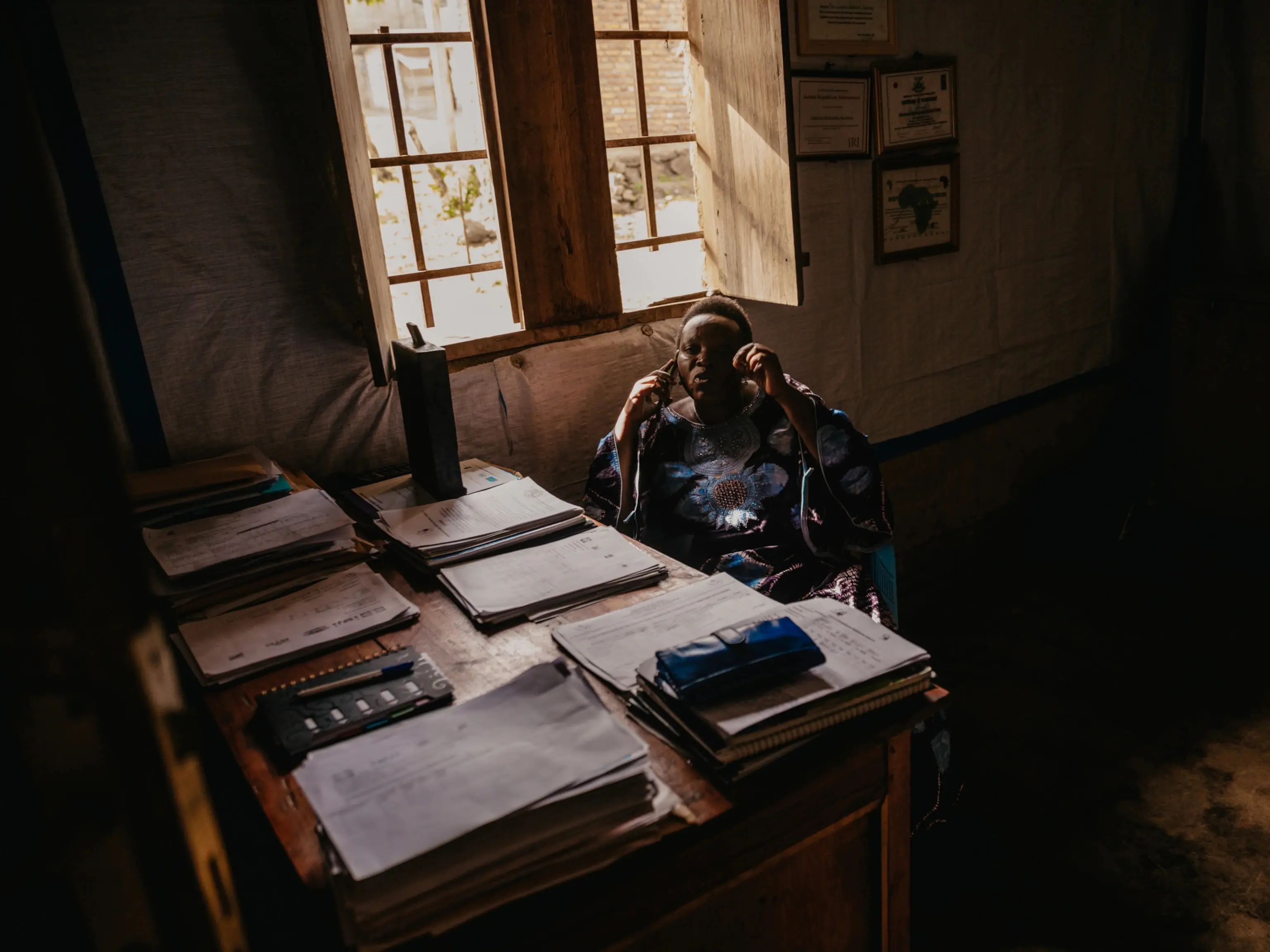
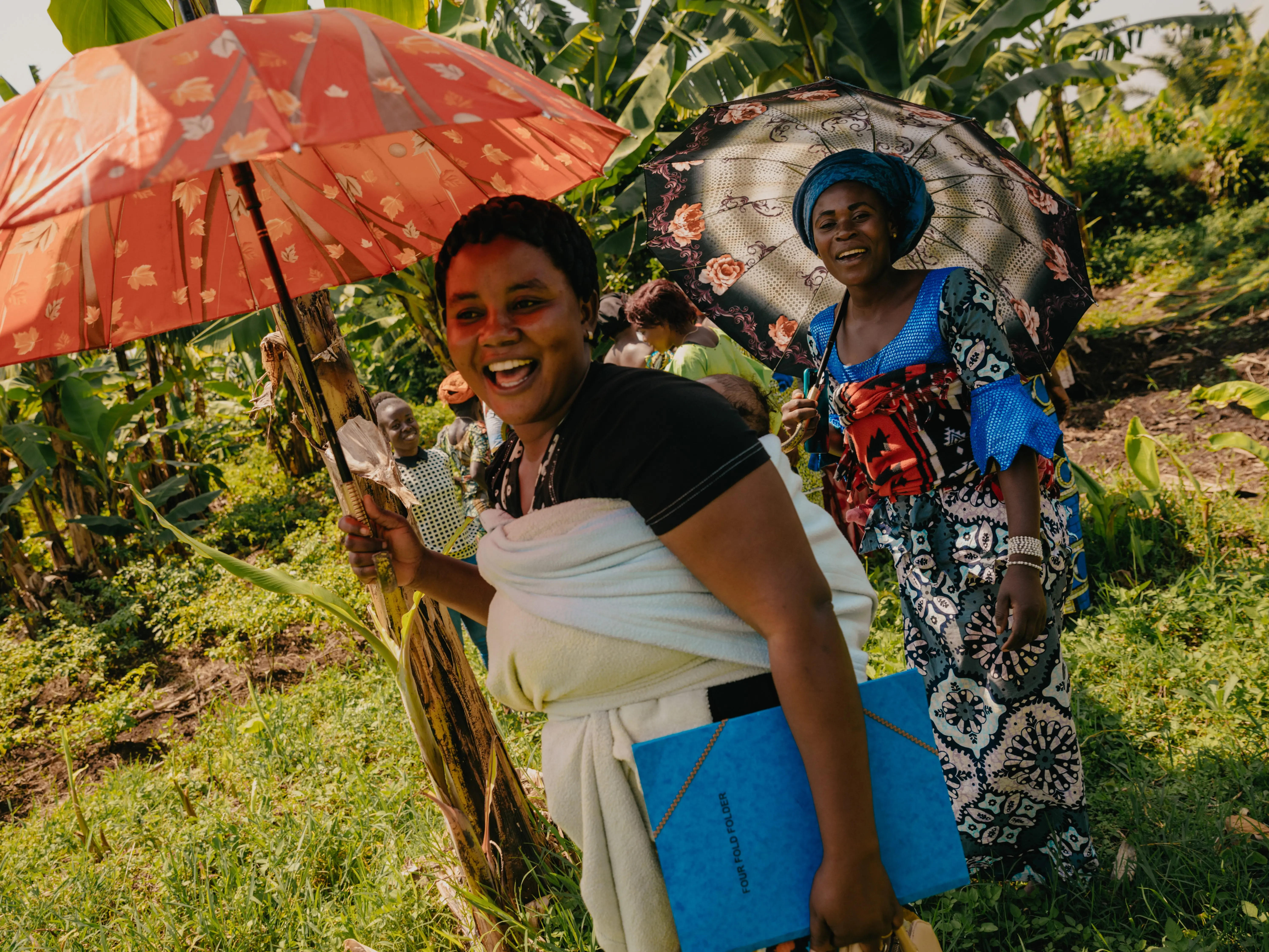
Soldiers sometimes carry out exactions against communities they suspect of harboring rebels. The places where civilians seek refuge are not safe either.
At the army headquarters, the general was holding court under a palm tree. Behind him, the frontline was in sight. “General father, we suffer,” the women told Cirimwami. “We sleep on the floor. We want war to end, the area must be secured.”
“Dear mothers, you came to cry for peace,” Cirimwami responded, wagging his finger. “But these rebels, they are your husbands and they are your sons.”
“General, the rebels dress as civilians,” Buratwa replied, holding the general’s gaze. “But we know who is who. We can work together if you keep the displacement sites safe.”
"Peace is at the center of our work because it is always in the minds of women. Even when we work on entrepreneurship we always think about peace and security because in order to be able to sell, women who bring food and produce from the forests and from the fields must be able to use a road that is safe and where there are no armed groups."
Josephine Malimukono, peace activist
Collaboration between women’s groups and the authorities has historically been difficult, says Nelly Mbangu, a lawyer from Goma. This is, she explains, because patriarchal culture is deeply entrenched in Congo. Women are expected to obey men, never disagree or complain, and they are not allowed to voice their opinions publicly. Those who do often face backlash in the form of threats, harassment, exile, even death.
Such customs make it challenging for women to take on leadership roles and speak up about the violence they endure, let alone spearhead the search for solutions. Yet their efforts are slowly making an impact. In November 2021, women in Mbangu’s network were the first to warn the population of an imminent rebel offensive.
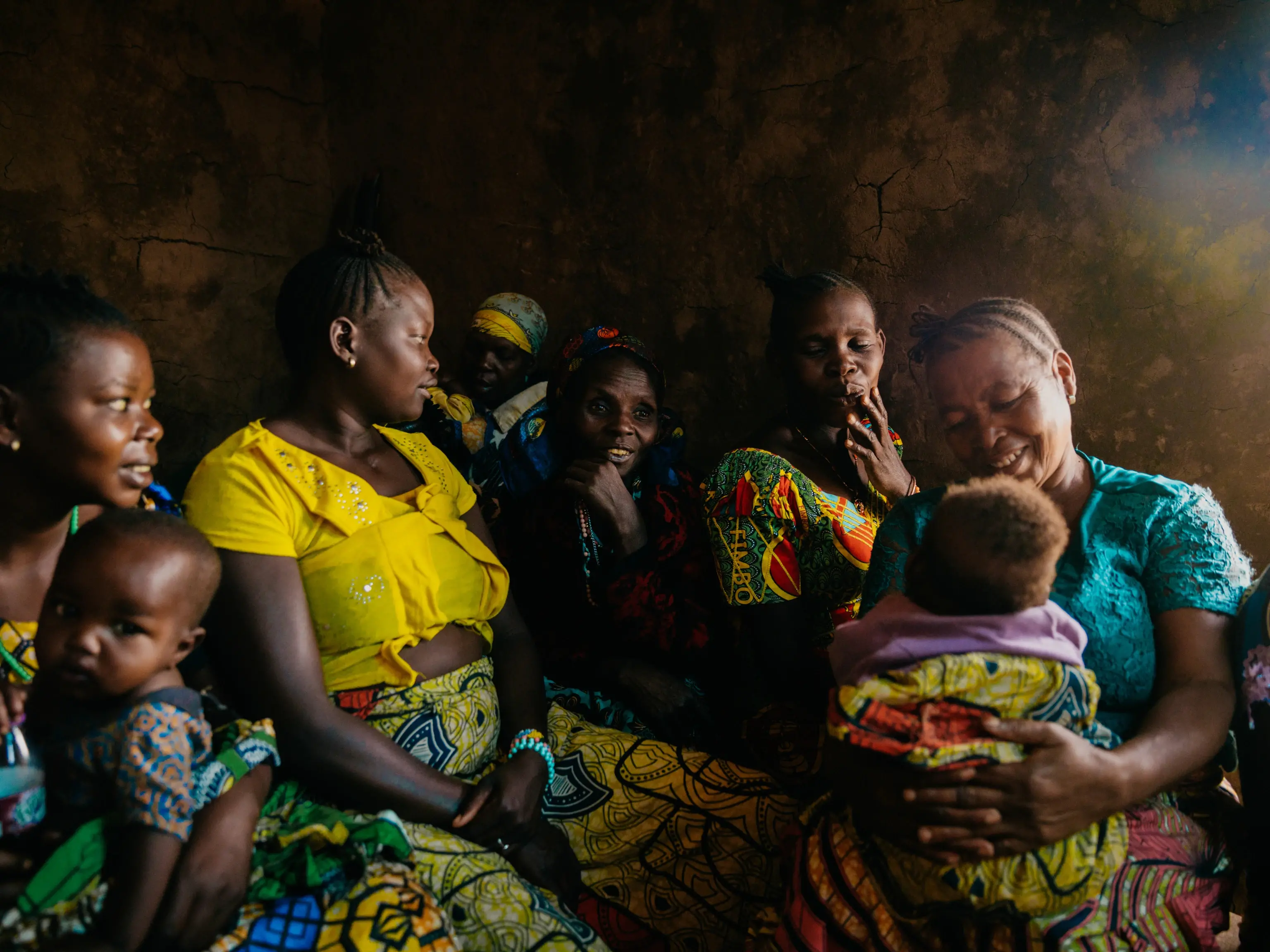
“We had women monitoring the situation across the territory, and reports came in of armed men in strange outfits,” Mbangu says. “So we worked with the military administrator and were able to alert everyone two days before the fighting broke out. I think now he [the military administrator] understands the importance of working with women’s networks.”
A new generation of peacemakers
Decades of unresolved conflicts over land, mining sites, patronage and power have left the provinces deeply fragmented and unstable.
But as women’s contributions to peace begin to be recognized, they have started to actively resolve disputes in their communities. “Many deadly conflicts start as small disagreements,” says Mathilde Mihigo, who works for the United Nations Joint Human Rights Office in South Kivu province. “A dispute between two heads of families over the limit of their fields becomes a fight between families, then it divides the village and it keeps escalating.”
Women’s groups are at the frontline of peace, Mihigo explains: “They show exceptional courage. And this determination is the cornerstone of peace”.
Another activist from South Kivu, Jacquie Kitoga, says that many people resort to violence to deal with their grievances, and young people join armed groups out of desperation to have their voices heard. “Many children were recruited and lost their souls in the forest,” she says. “I believe we must teach them how to manage problems peacefully.”
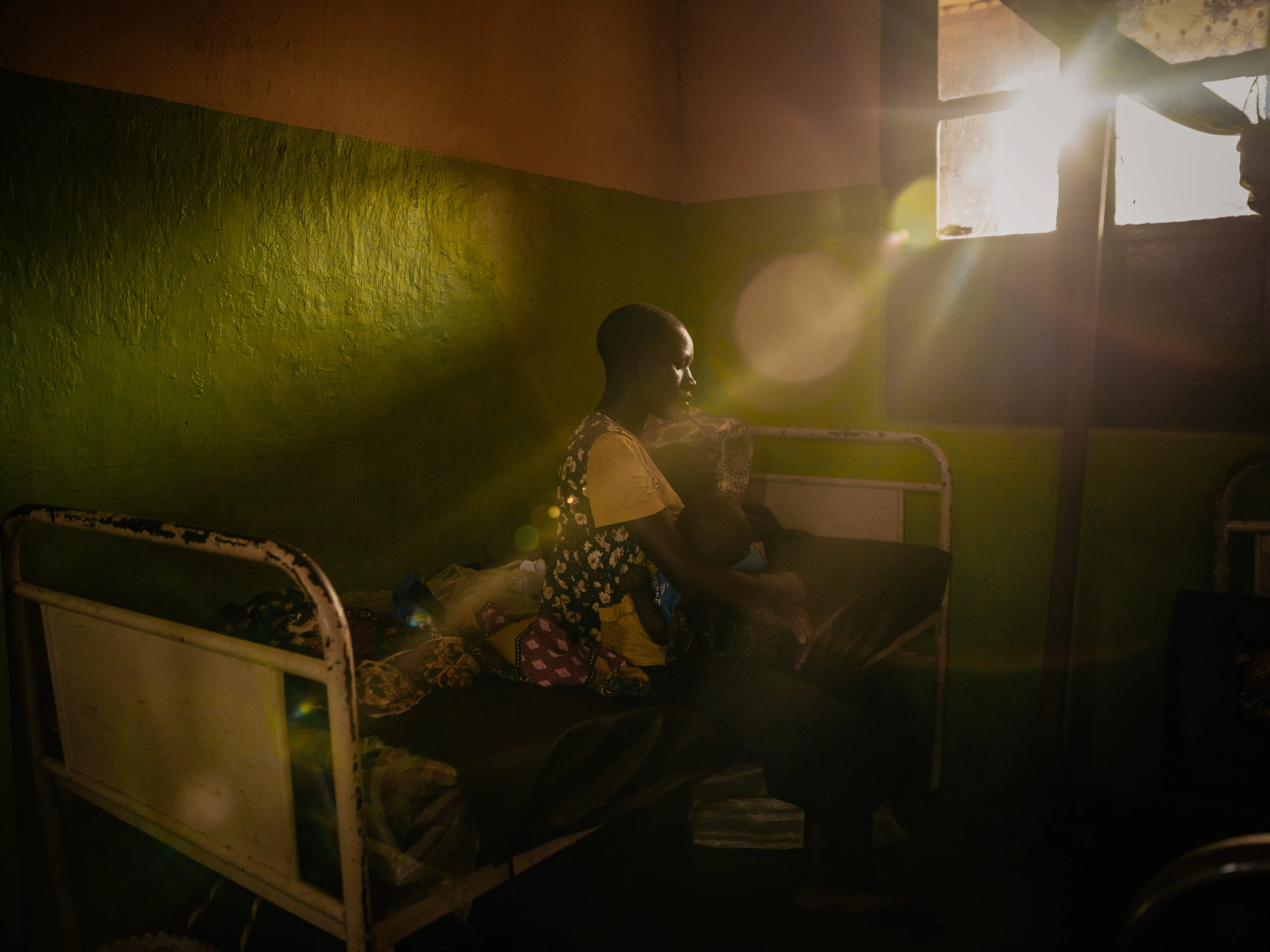
She says women and girls must be involved in the peace-making process if it is to be successful. “A bird cannot fly with one wing.”
Even as violence continues, 29-year-old activist Espérance Kazi says she remains hopeful as more young people join their efforts. In Beni, one of the most militarized area in eastern Congo, her association is working to create a culture of accountability at the local level and quell tensions before they escalate.
“A lot remains to be done,” says Kazi after organizing a gathering between soldiers and community members to deal with accusations of theft and rape. “But there are positive changes that can be observed.
“We now have representatives in each district who began documenting emerging tensions and bringing the information to us so we can invite the parties for a dialogue,” she says. “We also spoke to young people who enlisted in armed groups out of revenge and convinced them to surrender. Today, they are being reintegrated peacefully into the community.
“Women who speak on behalf of peace are always in danger,” Kazi says. “But we continue because nobody will come solve our problems for us.”
